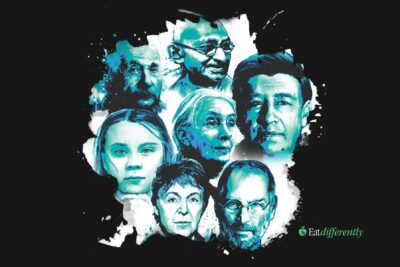As social justice movements grow, it becomes more and more important to offer a concise, easy-to-read, 101-guide with relevant references and further reading. We wanted to create this guide both for activists and for people who would like to know more or to understand what we – as social justice advocates – mean when we use certain terms. It is by no means complete: as new issues are raised, this guide will adapt and embrace them, because as the great civil rights leader Fannie Lou Hamer said, “nobody’s free until everybody’s free”.
Index of Terms
What do we mean by “activism”?
What do we mean by “outreach”?
What do we mean by “advocacy”?
What is lobbying and how do lobbyists work?
What is the difference between “lobbying” and “advocacy”?
What do we mean by “raising awareness”?
What do we mean by “animal rights”?
What is “animal welfare”?
What is the difference between animal welfare and animal rights?
What is a “sentient being”?
What do we mean by “cruelty to animals”?
What is a moral issue?
What is meant by “ethical veganism”?
What is “social justice”?
Why are animal rights a social justice issue?
What is “intersectionality”?
What is “ableism”?
What do we mean by “oppression”?
What is “inclusivity”?
What is “sexism”?
What is “body autonomy”?
What is systemic oppression?
What is “environmental activism”?
What do we mean by “factory farming”?
What is “carnism”?
What is an “undercover investigation”?
How would you explain vegan advocacy?
What is the difference between “vegan” and “plant-based”?
How is feminism related to animal rights?
How would you explain sustainability?
What is “speciesism”?
What is “animal liberation”?
What is an animal sanctuary?
What is meant by “ethical treatment of animals”?
What does “vivisection” mean and why is it cruel?
What are “ag-gag laws”?

What do we mean by “activism”?
Activism refers to the actions taken by individuals or groups of people to bring about political or social change. Activists seek to raise public awareness of issues, advocate for policy changes, and sometimes engage in direct action, such as protests or civil disobedience, to pressure those in power to address the issues they are concerned about.
Activism can take many forms, including political campaigning, community organizing, boycotts, strikes, and lobbying. It can be motivated by a variety of concerns, such as human rights, environmental issues, economic inequality, and social justice.
In general, activism is about using one’s voice and resources to bring about positive change in the world. Activists often work collaboratively with other individuals or groups who share similar concerns, and they may use a variety of tactics and strategies to achieve their goals.
Further reading:
- How to Create a Vegan World: A Pragmatic Approach by Tobias Leenaert
- Striking at the Roots: A Practical Guide to Animal Activism by Mark Hawthorne
- Aftershock: Confronting Trauma in a Violent World: A Guide for Activists and Their Allies by pattrice jones

What do we mean by “outreach”?
The term “outreach” refers to the act of reaching out or extending efforts to connect, engage, and provide information or support to a particular audience or community. It involves actively seeking to communicate, educate, or assist individuals or groups who may benefit from the services, resources, or knowledge being offered. Outreach can be conducted through various methods and channels, depending on the specific goals and target audience. Here are some examples:
- Community Health Outreach: A local health organization may conduct outreach programs to raise awareness about a specific health issue, such as diabetes or mental health. They might organize workshops, health fairs, or informational sessions in community centers, schools, or public spaces to provide education, free screenings, and resources to community members.
- Environmental Outreach: An environmental organization might engage in outreach efforts to promote sustainability practices. They could organize tree planting events, distribute educational materials on waste reduction and recycling, or host community meetings to discuss conservation initiatives and encourage community involvement.
- Educational Outreach: Universities and educational institutions often conduct outreach programs to inspire and support prospective students from underrepresented backgrounds. They might visit high schools, host college preparation workshops, or provide mentoring opportunities to help students navigate the college application process.
- Non-Profit Outreach: Non-profit organizations may conduct outreach campaigns to raise awareness about a particular cause or social issue and encourage public involvement or support. They might use social media campaigns, public events, or door-to-door canvassing to share information, gather donations, or recruit volunteers for their programs.
- Technology Outreach: Technology companies or organizations may conduct outreach initiatives to bridge the digital divide and provide access to technology and digital literacy. This could involve setting up computer labs in underserved communities, offering coding workshops to students, or providing discounted or free devices to low-income individuals.
- Animal Welfare Outreach: Animal welfare organizations often engage in outreach activities to promote responsible pet ownership, adoption, and animal welfare education. They might visit schools to give presentations, organize adoption events, or provide resources and support to pet owners in the community.
As you can see, the methods and approaches used may vary, but the purpose is to extend a helping hand, share information, and build connections to create positive impact.
What do we mean by “advocacy”?
Advocacy is the act of supporting, promoting, and defending a particular cause or issue. It involves using one’s voice and influence to bring attention to an issue, raise awareness, and ultimately, bring about positive change.
Advocacy can take many different forms, including public speaking, lobbying, writing letters or petitions, organizing events or protests, and engaging with the media. The goal of advocacy is to influence public opinion and policy in support of a particular cause or issue.
Advocacy can be undertaken by individuals or groups and can be focused on a wide range of issues, such as human rights, social justice, healthcare, education, and environmental protection. It often involves working collaboratively with other advocates and organizations who share similar goals and values.
Overall, advocacy is about using one’s voice and influence to create positive change and make a difference in the world.
Further reading:
- Motivational Methods for Vegan Advocacy: A Clinical Psychology Perspective by Casey T. Taft
- Beyond Beliefs: A Guide to Improving Relationships and Communication for Vegans, Vegetarians, and Meat Eaters by Melanie Joy PhD, Anna Crowe, et al.
- Antiracism in Animal Advocacy: Igniting Cultural Transformation by Jasmin Singer
What is lobbying and how do lobbyists work?
Lobbying refers to a group or organization working to influence the decisions and policies of governments or other powerful entities. The main goal of a lobbyist is to promote the interests or viewpoints of a particular group of people, such as businesses, industries, or social causes. The term “lobby” comes from the physical location in a government building where these groups would gather to meet with elected officials and advocate for their causes, but today the term is also used more broadly to refer to the practice of advocacy and lobbying itself.
Lobby groups can be made up of individuals, interest groups, corporations, or other organizations that share a common goal or interest (often, economic). They may engage in various tactics to influence policy, such as conducting research, organizing events and rallies, providing campaign donations or endorsements, and engaging in direct lobbying efforts with elected officials and government agencies.
Lobbyists can play an important role in the democratic process, as they allow individuals and groups to make their voices heard and advocate for their interests. However, they can also be criticized for having undue influence on policy outcomes and for representing narrow interests over the broader public good. After all, fossil fuel giants and Big Ag spend a lot of time and money lobbying governments.
Many governments have laws and regulations governing the activities of lobbyists to promote transparency and limit undue influence. For example, in the United States, organizations engaged in lobbying activities are required to register and report their activities and expenditures under the Lobbying Disclosure Act.
What is the difference between “lobbying” and “advocacy”?
Lobbying and advocacy are related concepts, but they have some important differences.
Advocacy generally refers to the act of supporting a particular cause, issue, or group of people through public education, awareness-raising, and lobbying. Advocacy can be done by individuals or groups, and can take many different forms, such as social media campaigns, community organizing, and policy analysis.
Lobbying, on the other hand, is a specific form of advocacy that involves attempting to influence the decisions of government officials or policymakers. Lobbying can involve a wide range of activities, such as meeting with lawmakers to present arguments and evidence, providing information and analysis on policy issues, and mobilizing public support for a particular position or cause.
The main difference between lobbying and advocacy is the focus on influencing government decision-making. While advocacy can involve a wide range of activities aimed at promoting a particular cause or issue, lobbying is specifically focused on shaping policy outcomes by influencing the actions of elected officials or government agencies.
Both lobbying and advocacy can play an important role in promoting social justice and advancing public policy goals. However, it is important for individuals and groups engaged in these activities to adhere to ethical principles and best practices, such as transparency, accountability, and a commitment to promoting the public good.

What do we mean by “raising awareness”?
Raising awareness refers to the act of bringing attention to a particular issue or cause, often with the goal of promoting understanding, supporting, and / or taking action. This can involve educating people about a particular issue, sharing information and resources, and encouraging individuals to take action.
Raising awareness can take many different forms, including public education campaigns, social media and online engagement, community events and outreach, and media coverage. The goal is to engage individuals and communities in a conversation about the issue or cause, and to encourage them to take action to support positive change.
Raising awareness is an important first step in creating change, as it can help to break down barriers and promote understanding and empathy. It can also help to build momentum for action, as more people become aware of the issue and get involved in efforts to promote change.
Overall, raising awareness is an essential part of social and political activism, as it helps to build support, mobilize communities, and create positive change in the world.
What do we mean by “animal rights”?
Animal rights refers to the concept that animals are entitled to certain fundamental rights, just as humans are. These rights are based on the recognition that animals are sentient beings capable of experiencing pain, pleasure, and other sensations and emotions, and should be treated with respect and compassion.
Animal rights advocates believe that animals should not be treated as property to be used for human purposes, such as food, clothing, entertainment, or scientific research. They argue that animals have a right to life, liberty, and freedom from suffering and exploitation.
Some of the specific rights that animal rights advocates seek to promote include the right to:
- Live free from abuse, neglect, and cruelty
- Be protected from unnecessary pain and suffering
- Live in their natural habitats, or environments that meet their biological and behavioral needs
- Be free from exploitation for human purposes, such as food, clothing, entertainment, or scientific research
- Receive legal protection and recognition of their rights
Animal rights is a growing movement that seeks to raise awareness about the ethical treatment of animals and promote changes in laws, policies, and cultural attitudes toward animals.
Further Reading:
- A Rational Approach to Animal Rights: Extensions in Abolitionist Theory by Corey Lee Wrenn
- Animal Liberation by Peter Singer
- Animal Rights: Moral Theory and Practice by Mark Rowlands
- Animal Rights by Christie Ritter
What is “animal welfare”?
Animal welfare refers to the ethical treatment and well-being of animals. It is based on the recognition that animals are sentient beings capable of experiencing pain, suffering, and emotions, and that they should be treated with respect and compassion.
Animal welfare encompasses a wide range of issues, including the treatment of animals used in agriculture, research, entertainment, and companionship. It involves ensuring that animals are provided with basic needs such as food, water, shelter, and medical care, and that they are protected from unnecessary pain, suffering, and cruelty.
Animal welfare advocates work to promote the well-being of animals by advocating for laws and policies that protect animals from abuse and neglect, educating the public about animal welfare issues, and promoting responsible animal ownership and management.
Animal welfare is an important ethical and moral issue, as it raises questions about our responsibilities to animals and our treatment of them. It is also important for human health and well-being, as animals play important roles in food production, disease research, and companionship.
What is the difference between “animal welfare” and animal rights”?
Animal welfare and animal rights are two distinct perspectives on how we treat and consider animals from an ethical standpoint. While both animal welfare and animal rights movements focus on the well-being of animals, there are profound and fundamental differences in the underlying principles and approaches.
Animal welfare emphasizes the responsible and humane treatment of animals – mainly farmed animals and all animals held in captivity or used for human purposes. It seeks to ensure that animals are provided with appropriate care, proper living conditions, and protection from unnecessary suffering. However, animal welfare campaigners still believe it is ethically acceptable to use animals for human purposes or needs, and even – in some cases – be slaughtered, as long as their welfare is respected, and their suffering is minimized while they are alive.
Some examples of animal welfare requests include:
1. Implementing laws and regulations to prevent cruelty to animals, such as anti-cruelty statutes and regulations for the use of animals in agriculture, farming, research, transport, and entertainment. In selected countries ‘unnecessary’ animal cruelty is now a felony – even though there is no clear standard as to what ‘unnecessary’ means.
2. Enacting ‘better’ standards and guidelines for the housing, care, and transportation of animals in various industries, including farming, zoos, and laboratories. For instance, the current ‘End The Cage Age’ campaign in the European Union is an animal welfare campaign, because it aims at presenting and approving a “legislative proposal to phase out and finally prohibit the use of cages for hens, mother pigs, calves, rabbits, ducks, geese and other farmed animals by 2027”.
3. Promoting practices that reduce stress and pain in animals during handling, transport, and slaughter processes, such as stunning for “humane” slaughter.
In short, “animal welfare” accepts the idea that humans have the right to use the animals, as long as their “welfare” (defined and established according to human standards) is granted.
Animal rights has a much broader ethical standpoint. Animal rights activists assert that animals possess inherent rights and should therefore not be treated as commodities or properties and should definitely not be used for human purposes. Animal rights movements argue that all animals – wild, domesticated or farmed – have the right to be free from any form of exploitation, cruelty, and suffering, and should be granted the same fundamental rights as humans.
Animal rights movements aim for a fundamental shift in the way animals are perceived and treated in society, advocating for their inherent rights and moral standing, and for their full liberation from human exploitation and dominion.
Examples of animal rights campaigns include:
1. Animal rights advocates strive for the complete elimination of animal use in industries such as farming, research, entertainment, and fashion. Their belief is rooted in the idea that animals should not be treated as resources or commodities.
2. Animal rights proponents promote veganism as a comprehensive lifestyle choice that extends beyond dietary choices. It involves rejecting the use of animal products in areas such as clothing and entertainment. For animal rights campaigners, veganism is an ethic, it is not a diet.
3. Advocates for animal rights actively work to bring an end to practices such as animal farming and slaughter, animal testing, and the use of animals in circuses or rodeos. Their goal is to eliminate these practices entirely.
4. Animal rights activists engage in direct actions, protests, and civil disobedience to raise awareness about animal rights issues and challenge societal norms that permit the mistreatment of animals.
We can summarize the difference between these two movements as follows: animal welfare asks for bigger cages; animal rights wants empty cages and free animals.
Further readings:
- A Rational Approach to Animal Rights: Extensions in Abolitionist Theory by Corey Lee Wrenn
- Changing the Game (New Revised and Updated Edition): Animal Liberation in the Twenty-First Century by Norm Phelps
- Eating Animals by Jonathan Safran Foer
- The Case For Animal Rights by Tom Regan
- Introduction to Animal Rights: Your Child or the Dog? by Gary L. Francione
- In Defense of Animals: The Second Wave by Peter Singer
What is a sentient being?
A sentient being is a being that can perceive and feel sensations and experiences, such as pleasure, pain, and emotions. Sentient beings can experience consciousness and have subjective experiences.
Many animals, including all mammals, birds, and fish, and some invertebrates, are sentient beings, as they have complex nervous systems and exhibit behaviors and responses that suggest they can experience pain, suffering, and other emotions.
The concept of sentient beings is important in discussions of animal welfare and rights since Jeremy Bentham’s times, as it emphasizes the ethical implications of treating animals as objects or commodities, rather than as beings with their own inherent value and rights. It also raises questions about the moral responsibility of humans to treat animals with respect, compassion, and consideration for their welfare.
In philosophies such as Buddhism, a “sentient being” includes every conscious creature. The term “sentience” is not new at all – it was created by philosophers in the 1630s and comes from the Latin word “sentientem” (or “feeling”). It describes the “ability to feel”, as opposed to the “ability to reason.”
According to neuroscientists such as Antonio Damasio, emotions allow organisms to cope successfully with objects and situations that are potentially dangerous or advantageous.
Further reading about animal sentience:
- The Pig Who Sang To The Moon: The Emotional World of Farm Animals by Jeffrey Moussaieff Masson
- When Elephants Weep: The Emotional Lives of Animals by Jeffrey Moussaieff Masson
- The Inner World of Farm Animals: Their Amazing Intellectual, Emotional and Social Capacities by Amy Hatkoff
- The Emotional Lives of Animals: A Leading Scientist Explores Animal Joy, Sorrow, and Empathy – and Why They Matter by Marc Bekoff
- What a Fish Knows: The Inner Lives of Our Underwater Cousins by Jonathan Balcombe
What do we mean by “cruelty to animals”?
Cruelty to animals refers to any intentional or unintentional act that causes physical or mental harm or suffering to animals. This can include physical abuse, neglect, abandonment, and other forms of mistreatment.
Examples of cruelty to animals include:
- Physical abuse, such as beating, kicking, or striking
- Neglect, such as failing to provide adequate food, water, shelter, or medical care
- Abandonment, such as leaving an animal alone to fend for themselves
- Animal hoarding, which involves collecting and keeping large numbers of animals in overcrowded and unsanitary conditions
- Animal fighting, which involves pitting animals against each other for entertainment or gambling
- Mutilation or killing of animals for sport or entertainment
Cruelty to animals is widely recognized as a serious ethical and moral issue, as it involves the infliction of pain and suffering on innocent creatures that cannot defend themselves. It is also often linked to other forms of violence and abuse, including domestic violence and child abuse.
Many countries have laws and regulations in place to protect animals from cruelty, and organizations and advocates work to raise awareness about the issue and promote animal welfare. Overall, promoting animal welfare and preventing cruelty to animals is an important part of building a just and compassionate society.
Further reading:
- Animals Matter: A Biologist Explains Why We Should Treat Animals with Compassion and Respect by Marc Bekoff
- The Ultimate Betrayal: Is There Happy Meat? By Hope Bohanec and Cogen Bohanec
- Bleating Hearts: The Hidden World of Animal Suffering by Mark Hawthorne
- The CAFO Reader: The Tragedy of Industrial Animal Factories by Daniel Imhoff
- Slaughterhouse: The Shocking Story of Greed, Neglect, and Inhumane Treatment Inside the U.S. Meat Industry by Gail A. Eisnitz
- Farmageddon: The True Cost of Cheap Meat by Philip Lymbery and Isabel Oakeshott
What is a moral issue?
A moral issue is a matter that involves questions of right and wrong, good and bad, and ethical principles and values. It is an issue that raises moral or ethical concerns and requires individuals and society to make decisions about what is morally acceptable and what is not.
Moral issues can take many different forms, including social justice, human rights, environmental protection, animal welfare, and many others. They often involve complex and contested moral and ethical frameworks and require individuals to consider multiple perspectives and values.
Moral issues can be highly subjective and can vary widely depending on cultural, social, and individual beliefs and values. However, they are generally considered to be issues that involve questions of fairness, justice, and the well-being of individuals and society.
Overall, moral issues are important to consider in discussions of social and political issues, as they reflect the values and principles that underlie our decision-making and our interactions with others. They are also important for shaping our individual and collective identity, and for promoting social and political change.
Further reading:
- Eat Like You Care: An Examination of the Morality of Eating Animals by Gary L. Francione
What is meant by “ethical veganism”?
Ethical veganism refers to a belief system and lifestyle that seeks to minimize harm and exploitation of animals as much as possible. Ethical vegans make dietary and lifestyle choices based on their concern for animals, environmental sustainability, and ethical considerations surrounding the treatment and use of animals.
Ethical vegans typically adopt a plant-based diet, avoiding the consumption of animal products such as meat, dairy, eggs, and honey. They also extend their ethical principles beyond their diet, often avoiding products derived from animals, such as leather, fur, and cosmetics tested on animals.
The motivations behind ethical veganism vary, but they often include concerns for the well-being of animals, recognition of their inherent value, and the belief that animals should not be exploited for human purposes. Ethical vegans may reject the notion of using animals for food, clothing, entertainment, or any other form of human use.
This perspective extends beyond personal choices to advocate for systemic changes in how animals are treated in society. Ethical vegans may engage in activism, raise awareness about animal rights, support animal sanctuaries and rescue organizations, and promote the adoption of veganism as a means of reducing animal suffering and promoting a more compassionate world.
Ethical veganism is just one approach to veganism, and people may adopt a plant-based diet or vegan lifestyle for various reasons, including health, environmental concerns, or religious beliefs. However, ethical veganism places a strong emphasis on the ethical treatment of animals and aims to align personal choices with the belief in minimizing harm and exploitation.
Further reading:
- Ethical Vegan: A Personal and Political Journey to Change the World by Jordi Casamitjana
- Our Symphony with Animals: On Health, Empathy, and Our Shared Destinies by Aysha Akhtar
- Sins of the Flesh: A History of Ethical Vegetarian Thought by Rod Preece
- Compassion, The Ultimate Ethic: An Exploration of Veganism by Victoria Moran
- Animal Grace: Entering a Spiritual Relationship with Our Fellow Creatures by Mary Lou Randour

What is “social justice”?
Social justice is a concept that refers to the idea of creating a fair and equal society, where everyone has equal access to opportunities and resources regardless of their race, gender, sexual orientation, economic status, species, or any other social or cultural identity.
Social justice involves working to address and eliminate social inequalities and disparities, and to promote fairness, inclusion, and diversity in all aspects of society. This includes issues such as poverty, discrimination, inequality, and oppression, as well as broader systemic issues that impact society, such as environmental degradation and access to healthcare.
Social justice also involves promoting human rights and respecting the dignity and worth of all individuals, and working to create a society where everyone is valued and respected. This includes efforts to promote equal access to education, employment, nutrition, and political participation, and to address systemic barriers that limit individuals’ opportunities and ability to thrive.
Overall, social justice is an important moral and ethical issue, as it is concerned with creating a more just, equitable, and inclusive society for all individuals, regardless of their social or cultural identity. It is a fundamental component of a healthy and thriving democracy and requires ongoing efforts to address and eliminate social inequalities and injustices.
Further reading:
- Sistah Vegan: Black Female Vegans Speak on Food, Identity, Health, and Society by A. Breeze Harper
- Veganism of Color: Decentering Whiteness in Human-Animal Relations by Julia C. Oparah and A. Breeze Harper
- Veganism in an Oppressive World: A Vegans-of-Color Community Project by Julia Feliz Brueck
Why are animal rights a social justice issue?
Animal rights are considered a social justice issue because they are concerned with promoting fairness, equality, and respect for all living beings, including animals. Just as human rights are concerned with promoting equal treatment and opportunities for all human beings, animal rights are concerned with promoting ethical and compassionate treatment of animals.
Animal rights advocates argue that animals are sentient beings with their own inherent worth and dignity, and that they should be treated with respect and compassion. They also argue that the exploitation and mistreatment of animals, such as in factory farming, animal testing, and other industries, is not only cruel and inhumane but also perpetuates a system of inequality and oppression.
Like other social justice issues, animal rights intersect with other forms of oppression and discrimination, including racism, sexism, and classism. For example, many low-income and marginalized communities are disproportionately impacted by environmental degradation and pollution from industrial animal agriculture.
Overall, promoting animal rights is a fundamental component of promoting social justice, as it involves advocating for the ethical and compassionate treatment of all living beings and working to eliminate systemic injustices and inequalities that perpetuate the exploitation and mistreatment of animals.
Further reading:
- Animal Rights/Human Rights: Entanglements of Oppression and Liberation (Critical Media Studies: Institutions, Politics, and Culture) by David A. Nibert
- Sister Species: Women, Animals and Social Justice by Lisa Kemmerer
- The Way We Eat: Why Our Food Choices Matter by Peter Singer

What is intersectionality?
Intersectionality is a concept that refers to the interconnected nature of social identities and systems of oppression. It recognizes that individuals have multiple identities, such as race, gender, sexuality, class, species, and ability, and that these identities intersect to shape their experiences of oppression and privilege.
Intersectionality also recognizes that social systems of oppression, such as racism, sexism, homophobia, and carnism, are interconnected and interdependent. This means that individuals who experience oppression in one area of their identity may also experience oppression in other areas, and that these forms of oppression are often mutually reinforcing.
For example, a Black woman may experience both racism and sexism, which can lead to unique forms of discrimination and marginalization that are not experienced by a white woman or a black man. Similarly, a person with a disability may experience both ableism and racism or sexism, which can compound their experiences of discrimination and marginalization.
Intersectionality is an important concept because it highlights the complex and multifaceted nature of social justice issues and emphasizes the need to address multiple forms of oppression and inequality simultaneously. It also recognizes the diversity of experiences within social groups and emphasizes the importance of supporting the voices and experiences of those who are most marginalized and oppressed.
Overall, intersectionality is a critical framework for understanding and addressing social justice issues, as it encourages individuals and communities to recognize the interconnected nature of social identities and systems of oppression, and to work towards creating more inclusive and equitable societies for all people.
Further readings
- Women, Race, and Class by Angela Davis
- Aphro-ism: Essays on Pop Culture, Feminism, and Black Veganism from Two Sisters by Aph Ko and Syl Ko
- Fading Scars: My Queer Disability History by Corbett Joan O’Toole
- The Intersectionality of Critical Animal, Disability, and Environmental Studies: Toward Eco-Ability, Justice, and Liberation (e-book) by Anthony J. Nocella II
- The Sexual Politics of Meat by Carol J Adams
What is “ableism”?
Ableism is a form of discrimination and prejudice against individuals with disabilities. It is based on the belief that people with disabilities are inferior to those without disabilities, and that their lives are less valuable or meaningful as a result.
Ableism can take many different forms, including physical and social barriers that prevent individuals with disabilities from accessing employment, education, healthcare, transportation, and other essential services. It can also include negative stereotypes and attitudes towards individuals with disabilities, such as assuming that they are less capable or intelligent than able-bodied individuals.
Ableism can be overt, such as intentionally excluding individuals with disabilities from opportunities or using derogatory language towards them. However, it can also be more subtle and insidious, such as using ableist language or assumptions about what individuals with disabilities can or cannot do.
Ableism is a significant social justice issue, as it perpetuates a system of discrimination and marginalization that limits the opportunities and experiences of individuals with disabilities. To address ableism, it is important to work towards creating more inclusive and accessible environments, challenging negative stereotypes and attitudes, and promoting the rights and dignity of individuals with disabilities.
Further reading:
- Beasts of Burden: Animal and Disability Liberation by Sunaura Taylor
- Vegans on Speciesism and Ableism by Peter Lang Verlag
What do we mean by “oppression”?
Oppression refers to a systemic pattern of discrimination, injustice, and mistreatment towards a particular group of people, based on their social identity. Oppression can take many different forms, including social, economic, political, and cultural.
Oppression is often characterized using power and privilege by individuals or groups in positions of authority, to maintain and reinforce existing social hierarchies that benefit them at the expense of others. This can result in the marginalization, exclusion, and subjugation of certain groups, while others enjoy greater access to resources, opportunities, and social status.
Oppression is not limited to a single form of discrimination, but can intersect with other forms, such as racism, sexism, homophobia, transphobia, ableism, and others. For example, a person who experiences oppression based on their race may also experience oppression based on their gender, sexual orientation, or socio-economic status.
Oppression is a social justice issue, as it undermines the dignity and humanity of individuals and communities and perpetuates a system of inequality and injustice. To address oppression, it is important to recognize and challenge the systems and structures that perpetuate it, and work towards creating more equitable and inclusive societies for all people.
Further reading:
- Animal Oppression and Human Violence: Domesecration, Capitalism, and Global Conflict (Critical Perspectives on Animals: Theory, Culture, Science, and Law) by David A. Nibert
- Queer and Trans Voices: Achieving Liberation Through Consistent Anti-Oppression by Julia Feliz Brueck
- Veganism in an Oppressive World by Julia Brueck
What is “inclusivity”?
Inclusivity refers to the practice of creating a welcoming and supportive environment that values and respects diversity and promotes the full and equal participation of all individuals regardless of their social identity. This includes individuals of different races, ethnicities, genders, sexual orientations, abilities, ages, religions, and socio-economic backgrounds.
Inclusivity is about recognizing and celebrating the unique identities and experiences of individuals, and creating spaces that are accessible and affirming for everyone. It also involves actively working to address and dismantle barriers to inclusion, such as discrimination, prejudice, and stereotypes.
Inclusive practices can take many different forms, such as promoting diversity and representation, creating accessible physical and virtual spaces, using inclusive language, providing accommodations for individuals with disabilities, and actively challenging and addressing discriminatory behaviors and attitudes.
Inclusivity is an important social justice issue, as it is essential for creating more equitable and just societies. By promoting inclusivity, we can ensure that everyone can participate fully and equally in social, economic, and political life, and that the diversity of human experience is valued and celebrated.
What is “sexism”?
Sexism is a form of discrimination or prejudice based on a person’s gender or sex, typically against women or individuals who do not conform to traditional gender norms. It is rooted in the belief that one gender is superior to others, and can take many different forms, including stereotypes, harassment, and unequal treatment.
Sexism can be overt or subtle, and can be perpetuated through social, economic, and political systems, as well as through individual attitudes and behaviors. For example, sexism may be reflected in the wage gap between men and women, the underrepresentation of women in leadership positions, or the objectification of women’s bodies in the media.
Sexism is a social justice issue because it perpetuates inequality and marginalization based on gender and limits the opportunities and experiences of individuals who are targeted by it. To address sexism, it is important to work towards creating more equitable and inclusive environments, challenging negative stereotypes and attitudes, promoting the rights and dignity of all individuals regardless of gender, and supporting women and other marginalized genders to achieve their full potential.
Further reading:
- Veganism, Sex and Politics by C. Lou Hamilton
- Contesting Anthropocentric Masculinities Through Veganism by Kadri Aavik
What is “body autonomy”?
Body autonomy is the concept that individuals have the right to control what happens to their own bodies, including the right to make decisions about medical treatment, reproduction, and sexual activity. It is closely related to the concept of bodily integrity, which asserts that individuals have the right to be free from unwanted or invasive medical procedures or other forms of physical interference.
Body autonomy is considered a fundamental human right and is protected by various international human rights treaties and legal frameworks. For example, the Universal Declaration of Human Rights states that “no one shall be subjected to arbitrary interference with his privacy, family, home or correspondence, nor to attacks upon his honour and reputation,” and the International Covenant on Civil and Political Rights affirms that “every human being has the inherent right to life” and “no one shall be subjected to torture or to cruel, inhuman or degrading treatment or punishment.”
Body autonomy can be a particularly important issue in the context of reproductive rights, where individuals may face barriers to accessing safe and legal abortion or contraception or may be subjected to coerced sterilization or other reproductive health procedures. It can also be relevant in cases of medical treatment, where individuals may be asked to consent to invasive or potentially harmful procedures without fully understanding the risks and benefits. The right to body autonomy is an essential component of individual freedom and dignity and is central to many social justice and human rights movements.
In the animal rights movement, the concept of body autonomy is used to argue for the rights of animals to be free from human exploitation and control. Animal rights advocates argue that animals should be recognized as sentient beings with the capacity to feel pain, pleasure, and other emotions, and should be granted the right to control their own bodies and lives.
This can take many forms, such as advocating for the end of animal testing and experimentation, opposing the use of animals in entertainment and sport, and promoting plant-based diets as a way to end the invasive and unwanted control over animals’ lives and bodies.
The animal rights movement is often framed as a social justice issue, as it seeks to challenge the systemic oppression and exploitation of animals and promote a more just and equitable relationship between humans and other species. By advocating for the rights of animals to control their own bodies and lives, animal rights advocates are working towards a more just and humane society, where all beings are treated with respect and dignity.

What is “systemic oppression”?
Systemic oppression refers to patterns of discrimination and disadvantage that are embedded within the social, political, and economic systems of a society, and are perpetuated through laws, policies, and cultural norms. Systemic oppression can take many forms, such as racism, sexism, ableism, homophobia, and transphobia, and can impact individuals and groups in different ways.
Systemic oppression is often characterized by unequal access to resources, opportunities, and power, as well as the devaluation and marginalization of certain groups of people. It can be difficult to address and dismantle, as it is deeply ingrained within the structures and institutions of society.
Examples of systemic oppression can include the historic and ongoing discrimination faced by Black people in many parts of the world, which has been perpetuated through laws and policies such as slavery, segregation, and mass incarceration. Similarly, systemic oppression can be seen in the ways that women and other marginalized groups have been excluded from positions of power and influence, as well as in the barriers they face in accessing education, healthcare, and other basic rights.
Addressing systemic oppression requires a multifaceted approach that addresses the underlying social and economic structures that perpetuate inequality, as well as the cultural and individual attitudes that support discriminatory practices. This can involve a range of strategies, such as policy reform, community organizing, education and awareness-raising, and advocacy for the rights of marginalized groups.
What is “environmental activism”?
Environmental activism is the work of individuals, groups, and organizations that advocate for the protection and preservation of the natural environment. Environmental activists work to raise awareness about the threats facing the environment, and to promote policies and practices that support sustainability, conservation, and responsible stewardship of natural resources.
Environmental activism can take many forms, including protests, public demonstrations, lobbying efforts, and educational campaigns. Activists may work on a wide range of issues, such as climate change, pollution, deforestation, wildlife conservation, and the protection of natural habitats.
Environmental activism is often framed as a social justice issue, as the impacts of environmental degradation and climate change disproportionately affect marginalized communities and those living in poverty. Environmental activists often work in collaboration with other social justice movements to address the interconnectedness of social, economic, and environmental issues.
Some notable examples of environmental activism include the work of Greta Thunberg and the Fridays for Future movement, which has brought attention to the urgent need for action on climate change, as well as the Indigenous-led movement to protect sacred lands and waters, such as the ongoing efforts to stop the construction of the Keystone XL pipeline in the United States.
What do we mean by “factory farming”?
Factory farming, also known as industrial farming, refers to a method of intensive animal agriculture that involves confining large numbers of animals in confined spaces for the purpose of producing meat, dairy, and eggs. In factory farms, animals are typically housed in crowded, unsanitary conditions, often in cages or pens that restrict their movement and natural behaviors.
The primary goal of factory farming is to maximize efficiency and profit by producing large quantities of animal products at a low cost. This often involves the use of antibiotics, growth hormones, and other chemicals to promote rapid growth and prevent disease outbreaks, as well as the use of genetically modified crops and chemically treated feed to increase productivity.
Critics of factory farming argue that this method of animal agriculture is inhumane and cruel, as it causes animals to suffer stress, disease, and injuries, and denies them the ability to engage in natural behaviors. They also point to the environmental impacts of factory farming, such as the pollution of water and soil from animal waste and the depletion of natural resources such as water and land, and to the health implications, particularly for antimicrobial resistance, zoonotic risks, and other risk factors for human health (both direct – for workers – and indirect – for individuals living in the immediate neighborhood, and for individuals who eat animal products).
What is “carnism”?
Carnism is a term coined by psychologist and social scientist Melanie Joy to describe the invisible belief system that underlies the consumption of animal products. According to Joy, carnism is a dominant ideology that supports the use of animals for food, and it is maintained by a set of social, psychological, and cultural mechanisms.
Carnism operates by maintaining a distance between consumers and the reality of animal agriculture, and by promoting a set of myths and justifications that make the consumption of animal products seem natural, normal, and necessary. Some of these myths include the idea that humans are biologically designed to eat meat, that meat is essential for good health, and that animals raised for food are treated well and live happy lives.
Joy argues that carnism is a problematic belief system because it relies on the objectification and exploitation of animals, and it contributes to a range of social and environmental problems, such as animal suffering, human health issues, and ecological destruction.
The concept of carnism has gained attention among animal rights advocates and those concerned about the impacts of animal agriculture, as it highlights the role of cultural and psychological factors in shaping our attitudes and behaviors towards animals and the environment.
Further reading:
- Why We Love Dogs, Eat Pigs, and Wear Cows: An Introduction to Carnism by Melanie Joy
What is an “undercover investigation”?
An undercover investigation is a type of investigative journalism or activism where a person or a team of people infiltrate an organization or a business with the aim of exposing illegal or unethical activities that would otherwise remain hidden from public view.
In the context of animal rights activism, undercover investigations are often conducted inside industrial farms, slaughterhouses, and other facilities that raise and kill animals for food or other products. The investigators may film secretly at night, install hidden cameras, or pose as employees or contractors and use hidden cameras and other recording devices to document the treatment of animals, including instances of abuse, neglect, and other forms of cruelty.
The goal of undercover investigations is to provide evidence of animal abuse and mistreatment, as well as to raise public awareness about the conditions inside these facilities. The footage and findings gathered during undercover investigations can be used to inform public debate, influence policy decisions, and hold companies accountable for their actions. However, undercover investigations have also been criticized for their potential to infringe on privacy rights and for the ethical considerations surrounding the use of deceptive tactics to obtain information.

How would you explain vegan advocacy?
Vegan advocacy is a type of activism that seeks to promote the adoption of a vegan lifestyle, which involves abstaining from the use of animal products for food, clothing, and other purposes.
Vegan advocates use a variety of strategies to promote veganism, including education, outreach, and direct action. Some vegan advocates focus on educating the public about the ethical, environmental, and health implications of animal agriculture and the benefits of a plant-based diet. They may organize public talks, distribute leaflets, or create online content to spread awareness.
Other vegan advocates use more direct tactics, such as protests, demonstrations, and civil disobedience, to draw attention to animal rights issues and push for change. These actions may involve disrupting the operations of animal agriculture facilities, challenging government policies that support animal exploitation, or pressuring companies to adopt more ethical and sustainable practices.
The goal of vegan advocacy is to shift societal attitudes and behaviors towards a more compassionate and sustainable way of living that prioritizes the well-being of animals, the environment, and human health. Vegan advocates believe that by promoting veganism, they can help reduce the suffering and exploitation of animals and contribute to a more just and equitable society for all.
What is the difference between “vegan” and “plant-based?
While the terms “vegan” and “plant-based” are often used interchangeably, there are some differences between them.
Veganism is a philosophy and lifestyle that seeks to exclude the use of animals for food, clothing, and other purposes. Vegans typically do not consume any animal products, including meat, dairy, eggs, and honey, and they also avoid using products made from animal-derived ingredients, such as leather, wool, and silk. Veganism is motivated by ethical, environmental, and health concerns, and is often associated with animal rights activism.
Plant-based, on the other hand, refers to a diet that is based on whole, plant foods such as fruits, vegetables, grains, legumes, nuts, and seeds, with little or no consumption of animal products. While some people adopt a plant-based diet for ethical or environmental reasons, others do so primarily for health reasons, as plant-based diets have been associated with a lower risk of chronic diseases such as heart disease, diabetes, and certain cancers.
While there is overlap between veganism and plant-based diets, it is possible to be on a plant-based diet without being fully vegan. For example, someone on a plant-based diet may occasionally consume small amounts of animal products, such as eggs or dairy, while still avoiding meat and other animal-derived ingredients. Or, they may work in an industry that exploits animals for profit but eat plant-based for their health.
In summary, veganism is a broader philosophy and lifestyle that extends beyond diet, while plant-based refers specifically to a way of eating that emphasizes whole, plant foods.
This is based on commonly accepted definitions of veganism and plant-based diets, as well as information from reputable sources such as:
These sources provide further information and resources related to veganism and plant-based diets and are widely recognized as reliable sources of information on nutrition and health.
How is feminism related to animal rights?
Feminism and animal rights are related in several ways. Both movements are concerned with issues of oppression, domination, and exploitation, and both seek to challenge and dismantle systems of power that enable these injustices.
One way in which feminism and animal rights intersect is through the concept of intersectionality. Intersectionality is the understanding that individuals and groups are affected by multiple forms of oppression, such as racism, sexism, ableism, and speciesism. This means that animal rights cannot be fully understood without considering how it intersects with other forms of oppression, such as sexism and racism. For example, women and girls are often disproportionately affected by animal agriculture and environmental destruction, and women’s empowerment is closely linked to animal rights and environmental justice.
Another way in which feminism and animal rights intersect is using animal metaphors and imagery in language and culture. The use of phrases like “flogging a dead horse” or “bringing home the bacon” perpetuates the idea that animals are objects to be used and abused and reinforces a culture of domination and violence. Feminists argue that this language reinforces harmful attitudes and behaviors towards both women and animals, and that changing our language can be a powerful tool for promoting more compassionate and just societies.
Overall, feminism and animal rights share a common goal of challenging and transforming systems of oppression and domination. By recognizing the connections between different forms of oppression and working together towards a more just and equitable world for all beings, we can create a more compassionate and sustainable future.
How would you explain sustainability?
Sustainability refers to the ability of a system or process to be maintained over time without depleting natural resources or causing harm to the environment. It is often used in the context of human activities and development, where the goal is to meet the needs of the present generation without compromising the ability of future generations to meet their own needs.
Sustainability encompasses many different aspects of human life, including economic, social, and environmental sustainability. Economic sustainability involves using resources in a way that promotes long-term prosperity and stability, while social sustainability involves ensuring that communities are healthy, equitable, and resilient. Environmental sustainability involves using natural resources in a way that does not deplete or harm them and minimizes the negative impacts of human activities on the natural world.
Achieving sustainability requires a holistic approach that considers the interconnectedness of different systems and processes. It involves balancing the needs of people, the environment, and the economy, and making choices that promote long-term well-being and stability. This might involve adopting sustainable practices in agriculture, transportation, energy production, and other sectors, as well as promoting policies and regulations that support sustainable development.
Sustainability is an important concept in the modern world, as human activities continue to put pressure on the planet’s natural resources and ecosystems. By promoting sustainable practices and policies, we can help to create a more equitable and just society that meets the needs of all people, now and in the future.
What is “speciesism”?
Speciesism is the belief that one species, usually humans, is inherently superior to all others and therefore has the right to dominate, use, and exploit other species for their own benefit. This term was coined by philosopher Richard Ryder in 1970 and is similar in nature to other forms of discrimination such as racism, sexism, and homophobia. Speciesism often leads to the mistreatment and exploitation of animals, including their use in food production, scientific experimentation, and entertainment. Advocates of animal rights argue that speciesism is unjustifiable and that all animals, regardless of their species, have the right to be treated with respect and compassion.
Here are some examples of speciesism that can be recognized by a multicultural audience:
- Using animals for entertainment: Many cultures use animals in circuses, rodeos, and other forms of entertainment, which can involve cruel treatment and exploitation of animals.
- Eating meat: Some cultures have a strong tradition of meat consumption, often resulting in the mistreatment and exploitation of animals raised for food.
- Using animals in scientific research: Many countries use animals in scientific experiments, which can result in significant harm and suffering, and death.
- Wearing fur or using other animal products: Some cultures value the use of animal products for clothing and other purposes, often resulting in the killing of animals for their skin, fur, or other body parts.
- Keeping animals in captivity: Many cultures keep animals in zoos, aquariums, and other forms of captivity for human enjoyment, often leading to poor living conditions, psychological anguish, and physical suffering.
Further reading:
- Speciesism by Joan Dunayer
- Some We Love, Some We Hate, Some We Eat: Why It’s So Hard to Think Straight About Animals by Hal Herzog

What is “animal liberation”?
Animal liberation is a philosophy and social movement that aims to end the use and exploitation of animals by humans. It advocates for the equal rights and freedom of all sentient beings, regardless of their species, and opposes the idea that animals are property or resources for human use.
The concept of animal liberation was popularized by Australian philosopher Peter Singer in his book Animal Liberation in 1975. The book argues that animals should have the same moral status as humans and that their suffering and rights should be taken seriously.
Animal liberation is often associated with the animal rights movement and veganism, as it promotes the idea of ending animal exploitation in all areas of human life, including food, clothing, entertainment, and scientific research.
Those who support animal liberation believe that animals have the right to live free from suffering, confinement, and harm caused by human activities, and that it is our responsibility as a society to protect them. The movement advocates for changes in laws and policies that promote animal welfare and rights and encourages individuals to make ethical choices in their daily lives to support the liberation of animals.
What is an animal sanctuary?
An animal sanctuary is a place where animals, typically farmed animals or domesticated companion animals, are rescued, rehabilitated, and provided with a safe and permanent home for the rest of their lives. Animal sanctuaries may also provide educational programs, volunteer opportunities, and advocacy work to raise awareness about animal welfare issues.
Sanctuaries are usually non-profit organizations that are run by volunteers or staff and rely on donations from the public to fund their operations. The animals in sanctuaries may come from a variety of situations, including those rescued from abusive or neglectful situations, retired from use in industries like agriculture or entertainment, or surrendered by individuals who can no longer care for them.
The goal of animal sanctuaries is to provide a peaceful and caring environment for animals who have often suffered trauma, abuse, or neglect in their past lives. Many sanctuaries also work to promote animal rights and educate the public about the issues facing animals in our society.
Overall, animal sanctuaries serve as a vital resource for animals in need and provide a valuable service to both the animals and the communities they serve.
What is meant by “ethical treatment of animals”?
The ethical treatment of animals refers to the belief that animals should be treated with respect and consideration for their well-being, just as humans should be. It is based on the idea that animals are sentient beings capable of experiencing pain, suffering, and a range of emotions, and that they should not be treated merely as commodities or objects for human use.
The ethical treatment of animals involves recognizing their intrinsic value and respecting their interests, whether that involves providing them with adequate food, water, shelter, and veterinary care, or avoiding practices that cause them unnecessary harm, pain, or suffering. This can include issues such as animal testing, factory farming, animal cruelty, and animal exploitation for entertainment, among others.
The ethical treatment of animals is often considered a fundamental aspect of animal welfare and animal rights, and is an important consideration for individuals, organizations, and policymakers working to improve the lives of animals.
What does “vivisection” mean and why is it cruel?
Vivisection refers to the practice of conducting invasive experiments on live animals for scientific research or educational purposes. It involves subjecting animals to various procedures, such as surgery, dissection, and the administration of drugs or chemicals, often without anesthesia or adequate pain relief. Vivisection is ethically problematic, as it causes unnecessary harm, suffering, and death to sentient beings who can experience pain and distress. Animal rights proponents are not the only stakeholders in this discussion, and there are also arguments made by researchers, scientists, and regulatory bodies regarding the necessity and benefits of animal testing in certain contexts.
There are a few arguments against vivisection:
- Vivisection inflicts severe physical and psychological suffering on animals, leading to distress, pain, and fear. Animal rights activists argue that such practices are inherently cruel and violate the moral principle of not causing unnecessary harm to sentient beings.
- The reliability and relevance of animal-based research in predicting human responses and developing effective treatments are often questionable. The physiological and genetic differences between humans and animals can limit the applicability of findings obtained from animal experiments.
- There are cruelty-free alternatives thanks to advances in technology, such as in vitro studies, computer modeling, and human-based research techniques. These alternatives can provide more accurate and ethical approaches to scientific inquiry, reducing the need for animal experimentation.
- There are also concerns about the ethical implications of using animals as mere tools for experimentation, particularly when legal protections are inadequate or insufficiently enforced. Animal rights organizations often call for stronger regulations and increased transparency in animal research.
In addition to scientific research and education, animal testing is also prevalent in the cosmetics and household product industries, where animals are used to test the safety and efficacy of various products, including detergents and makeup.
When it comes to testing detergents, animals are commonly subjected to skin irritation and corrosion tests, in which the products are applied to their skin or eyes to assess potential harmful effects. These tests can cause significant pain, distress, and lasting damage to the animals involved.
Similarly, makeup testing often involves subjecting animals to tests such as skin sensitization, eye and skin irritation, and acute toxicity testing. These procedures can result in suffering, pain, and ultimately death for the animals used. Animal rights proponents argue that such testing is unnecessary, as there are alternative methods available that do not require animal experimentation.
In recent years, there have been significant advancements in alternative testing methods for cosmetics and household products. These include in vitro tests that use human skin cell cultures, computer modeling, and the utilization of existing data on ingredient safety. These alternatives provide more accurate and human-relevant results while avoiding the harm inflicted upon animals.
Furthermore, regulatory changes in several countries and regions have aimed to reduce or eliminate animal testing for cosmetics and household products. The European Union, for instance, has implemented a ban on animal testing for cosmetic ingredients and finished products. Other countries, such as India and Israel, have also implemented similar bans or restrictions on animal testing for cosmetics.
Reputable sources for information on animal testing in the cosmetics and household product industries from an animal rights perspective include organizations such as Cruelty Free International, the Leaping Bunny Program, and the Humane Society International. These sources can provide further insights, statistics, and details about the ethical concerns related to animal testing and the efforts to promote cruelty-free alternatives.
Further reading:
- Alternatives to Animal Testing by Kojima Seidle
- Slaughter of the Innocent by Hans Ruesch
- Naked Empress, or the Great Medical Fraud by Hanns Ruesch
What are “ag-gag laws”?
Ag-gag laws are laws that restrict or criminalize the undercover investigation and exposure of animal cruelty and other unethical practices within animal farms. These laws aim to prevent activists, journalists, and whistle-blowers from documenting and revealing instances of animal abuse and suffering, unsafe working conditions, environmental violations, and food safety concerns that may occur in farming operations.
Ag-gag laws typically include provisions that make it illegal to gain access to agricultural facilities under false pretenses, record video or take photographs without permission, or fail to report observed violations within a specific timeframe. By imposing penalties and legal consequences, these laws discourage individuals from conducting undercover investigations and publicizing the obtained evidence.
While the term “ag-gag laws” is primarily associated with the United States, where several states have enacted such legislation, similar legal measures or regulations exist in other countries, including Australia and Canada, as well. However, the specific details and terminology may vary.
Even without ag-gag laws, legal action against animal investigators can occur in various countries when they engage in undercover investigations that expose illegal or unethical activities. Lawsuits may be initiated by the agricultural industry, companies or individuals directly affected by the investigations, or even by the government. The specific legal framework and potential consequences depend on the jurisdiction and the nature of the investigation.
In some cases, instead of lawsuits, efforts may be made to pass legislation or obtain injunctions to prevent the release of undercover investigation footage or to limit the impact of the obtained evidence. The intention behind these legal actions is often to protect the reputation and economic interests of the industries involved.
The occurrence and details of legal actions against animal investigators vary by country and jurisdiction, depending on the legal protections and regulations in place, as well as the political and cultural context surrounding animal rights activism.



